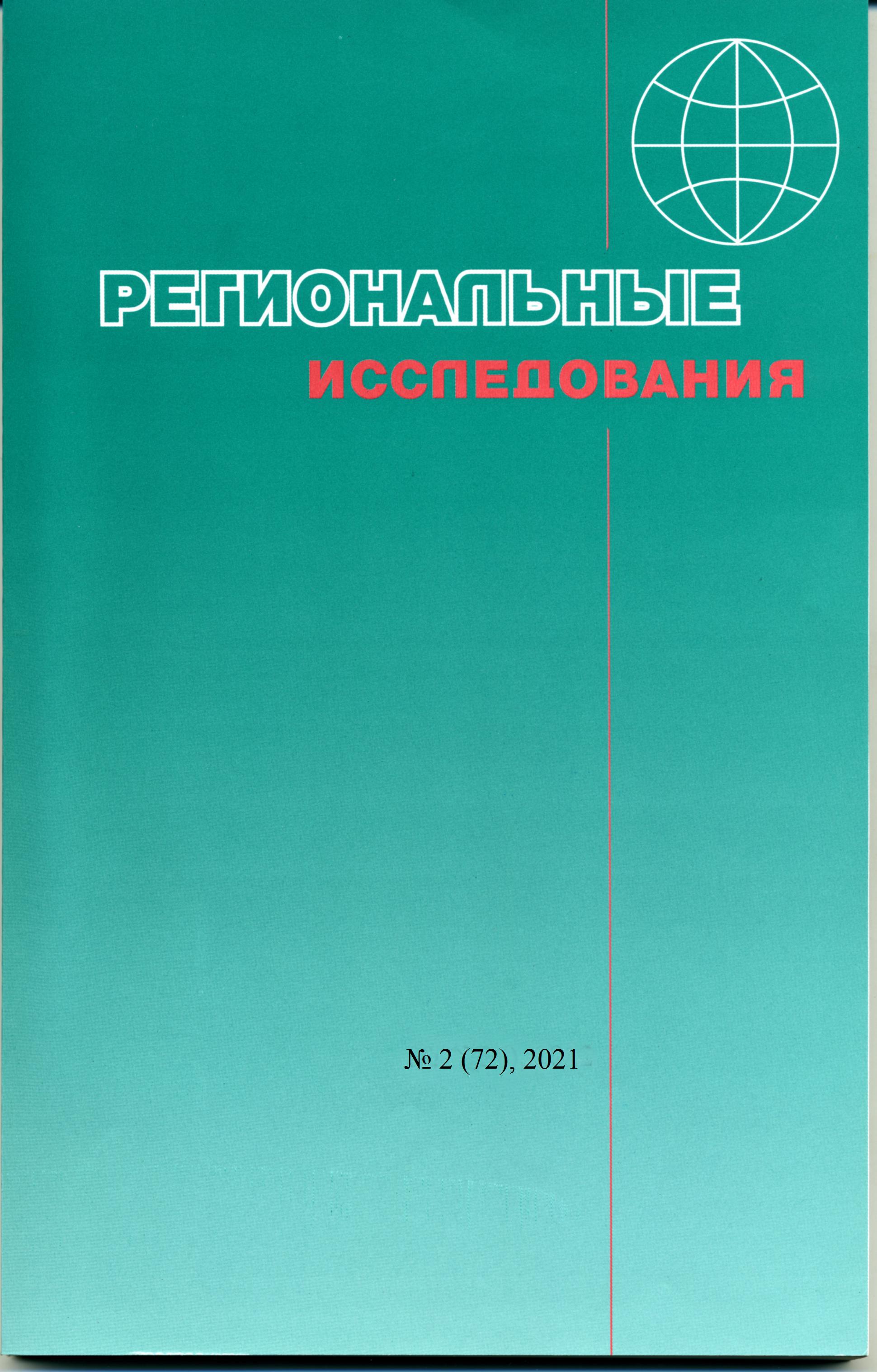Adamaitis S.A. The role of industrial parks and technology parks in the socio-economic development of Russian regions
DOI:
https://doi.org/10.5922/1994-5280-2021-2-8Keywords:
industrial park, technopark, socio-economic development, territorial differentiation, geography of manufactureAbstract
The study examines the effects of industrial parks and technoparks at the regional level. Based on the financial and economic indicators of residents of industrial parks and technoparks, the geography of their activities at the level of the Russian Federation constituent entities is considered. To perform this study the author’s database on residents is used, created on the basis of information from the commercial database Orbis for the period 2010 – 2018, as well as the open data from the Federal Tax Service and statistics from the Rosstat. There is a strong concentration of the market for industrial parks and technology parks in several regions of Russia, including city of Moscow, Moscow and Kaluga regions and the Republic of Tatarstan. This fact can be explained with objective reasons, including the agglomeration effect, capacious sales and labor markets, as well as other indicators of investment attractiveness. Most industrial parks and technoparks currently do not have a significant influence on development of the regions in which they are created, which may be caused by such factors as the insufficiently competent investment-resident policy of management structures. According to the results of the study, a conclusion is made that the role of industrial parks and technoparks in social and economic development is significant only in a few regions with high competitive advantages, and in regions without such advantages parks do not impact on the development significantly.
References
Агирречу А.А. Историко-географические особенности формирования наукоградов России: дисс. … канд. геогр. наук: 25.00.24 / МГУ имени М.В. Ломоносова. М., 2006. 172 с.
Бакланов П.Я. Новые инструменты регионального развития на Дальнем Востоке // Социально-экономическая география: история, теория, методы, практика: сб. науч. ст. Владивосток, 2016. С. 245–255.
Богачев И.И., Родионова И.А. Характеристика состояния и проблемы развития фармацевтического кластера в Калужской области // Вестн. РУДН. Сер.: Экономика. 2014. № 1. C. 24–34.
Гуменюк И.С., Орлов С.В. Калининградская область как территория потенциального формирования транспортного кластера Приморского региона // Балтийский регион. 2014. № 3. C. 121–131.
Земцов С.П. Опыт выявления и оценки потенциала инновационных кластеров (на примере отрасли «Рациональное природопользование») // Региональные исследования. 2013. № 2. С. 12–19.
Кузнецова О.В. Особые экономические зоны: эффективны или нет? // Пространственная экономика. 2016. № 4. C. 129–152.
Лаппо Г.М., Полян П.М. Наукограды России: вчерашние запретные и полузапретные города – сегодняшние точки роста // Мир России. Социология. Этнология. 2008. № 1. C. 20–49.
Михайлов А.С. География международных кластеров в Балтийском регионе // Балтийский регион. 2014. № 1. C. 149–163.
Осипов В.А. Индустриальные парки как инструмент улучшения инвестиционного климата и развития региональной экономики (на примере Калужской области) // Вестн. Образоват. консорциума Среднерусск. ун-т. Сер.: Экономика и управление. 2016. № 7. С. 84–90.
Часовский В.И. Рыночные формы организации промышленного производства в модернизации экономики России // Региональные исследования. 2015. № 1. С. 63–71.
Коммерческая база данных Orbis. [Электр.ресурс]. URL: https://orbis.bvdinfo.com/ (дата обращения: 20.02.2020).
Открытые данные Федеральной налоговой службы. [Электр. ресурс]. URL: https://www.nalog.ru/ rn77/opendata/ (дата обращения: 22.11.2020).
Отраслевой обзор «Индустриальные парки России – 2019. Выпуск шестой». Ассоциация индустриальных парков России. [Электр.ресурс]. URL: https://indparks.ru/materials/edition/AIP2019_ WEB_review_compressed/ (дата обращения: 24.11.2020).
Постановление Правительства Российской Федерации от 04.08.2015 № 779 «О промышленных кластерах и специализированных организациях промышленных кластеров». [Электр. ресурс]. URL: http://docs.cntd.ru/document/420291916 (дата обращения: 22.11.2020).
Постановление Правительства Российской Федерации от 04.08.2015 № 794 «Об индустриальных (промышленных) парках и управляющих компаниях индустриальных (промышленных) пар- ков». [Электр. ресурс]. URL: http://government.ru/docs/19250/ (дата обращения: 22.11.2020).
Пятый ежегодный обзор «Технопарки России». Ассоциация кластеров и технопарков России. [Электр.ресурс]. URL: https://akitrf.ru/upload/V_Obzor_Technoparki_Rossii-2019.pdf (дата обращения: 22.11.2020).
«Регионы России. Социально-экономические показатели». Росстат. [Электр.ресурс]. URL: https://rosstat.gov.ru/free_doc/doc_2018/region/reg-pok18.pdf (дата обращения: 22.11.2020).
Социально-экономическая география: понятия и термины: словарь-справочник / Отв. ред. А.П. Горкин. Смоленск: Ойкумена, 2013. 328 с.
Boix M. et al. Optimization methods applied to the design of eco-industrial parks: a literature review // Journal of Cleaner Production. 2015. V. 7. P. 303–317.
Ferguson D., Fernández R.E. The Role of the University in the innovation ecosystem, and Implications for science cities and science parks: A human resource development approach // WTR. 2015. V. 4. P. 132–143.
Industrial estate. Principles and practices. Vienna, Austria: UNIDO, 1997. 47 p.
László K. The competitiveness factors of industrial parks //The Annals of the University of Oradea. 2014. P. 151–156.
Li J. et al. Building green supply chains in eco-industrial parks towards a green economy: Barriers and strategies // Journal of Environmental Management. 2015. V. 162. P. 158–170.
Van Leeuwen M.G., Vermeulen W.J.V., Glasbergen P. Planning eco-industrial parks: an analysis of Dutch planning methods // Business Strategy and the Environment. 2003. V. 12. № 3. P. 147–162.
Wallsten S. Do science parks generate regional economic growth? An empirical analysis of their effects on job growth and venture capital // AEI-Brookings Joint Center for Regulatory Studies. 2004.№ 04-04. 17 p.
Zheng S. et al. The birth of edge cities in China: Measuring the effects of industrial parks policy // Journal of Urban Economics. 2017. V. 100. P. 80–103.

